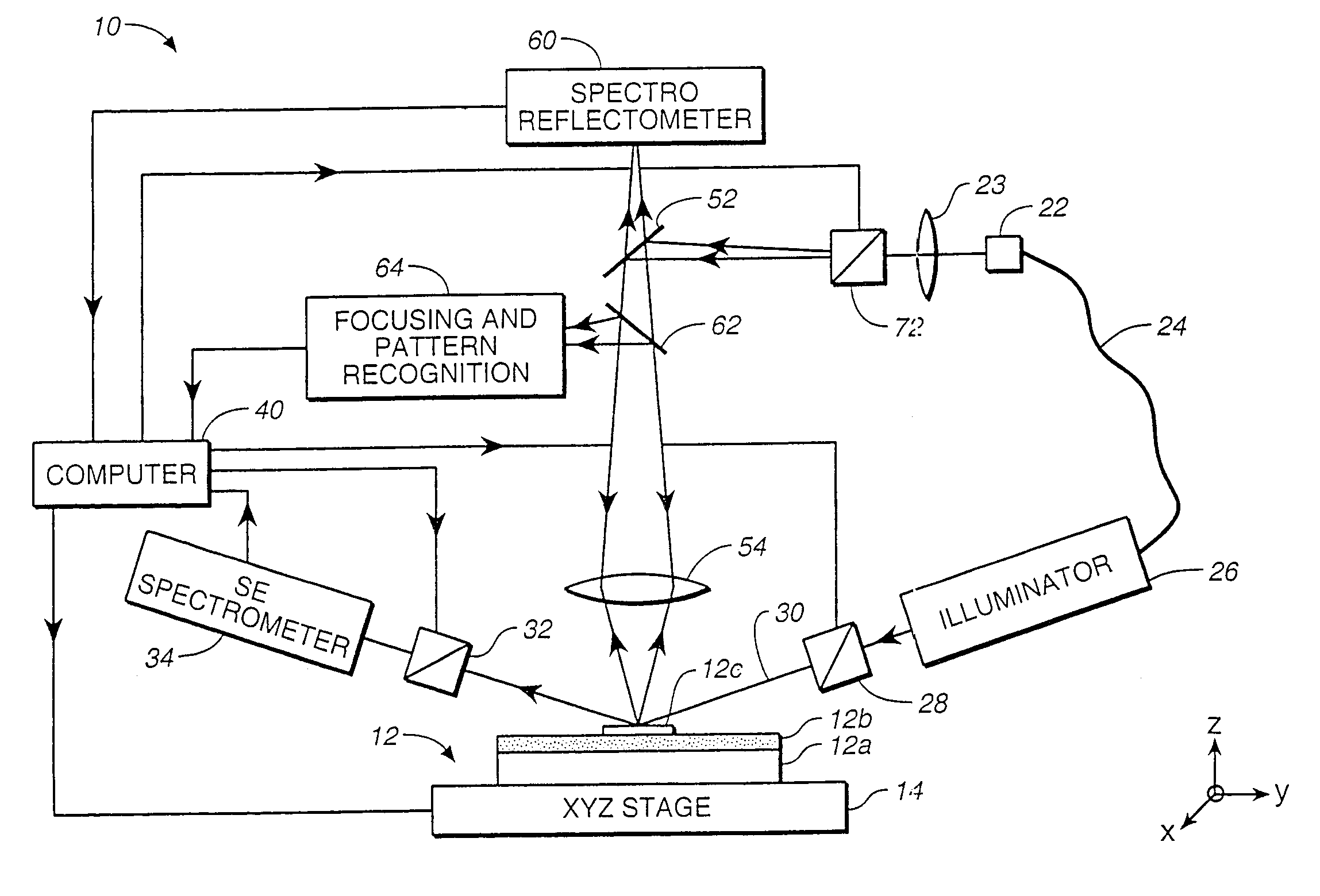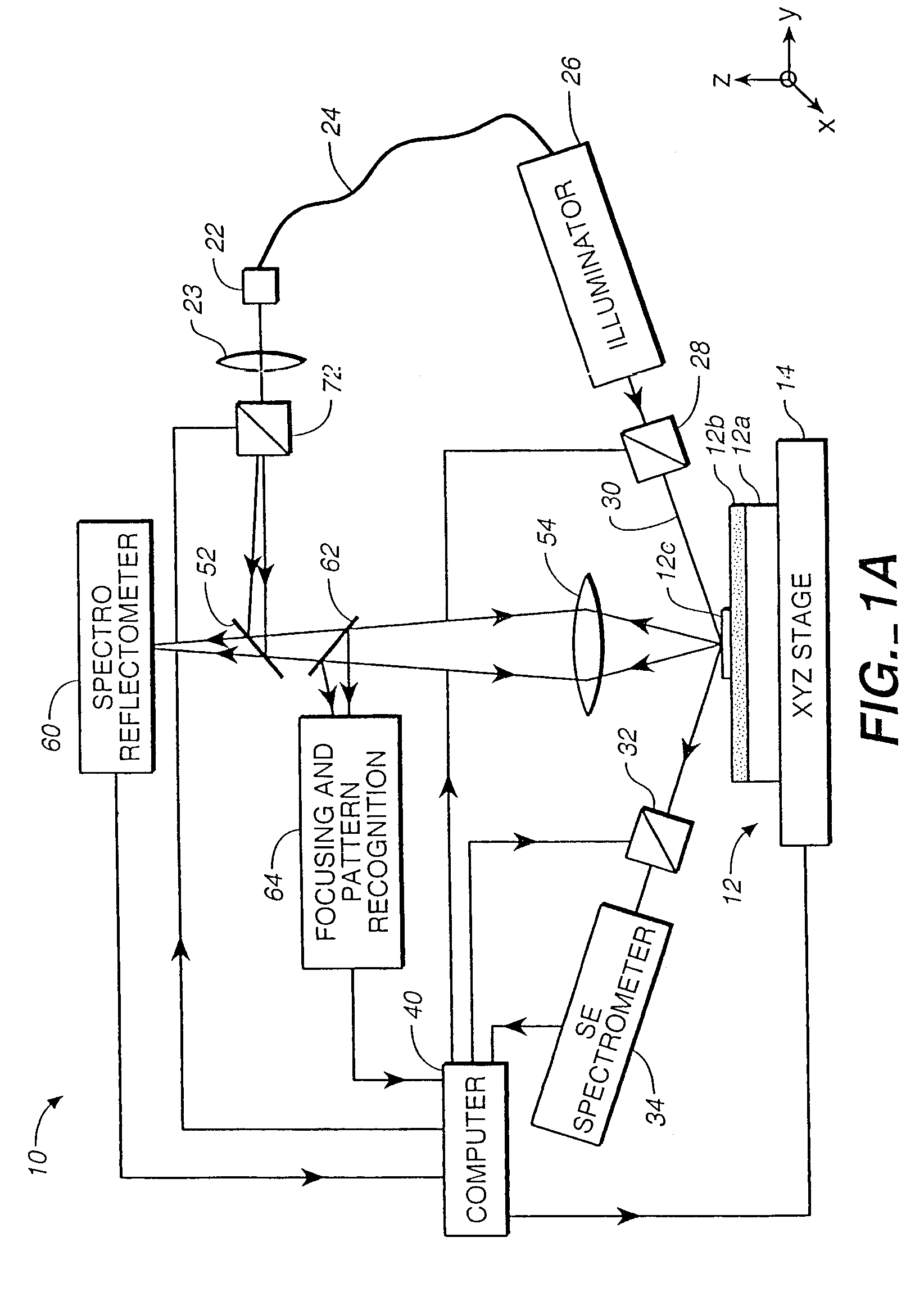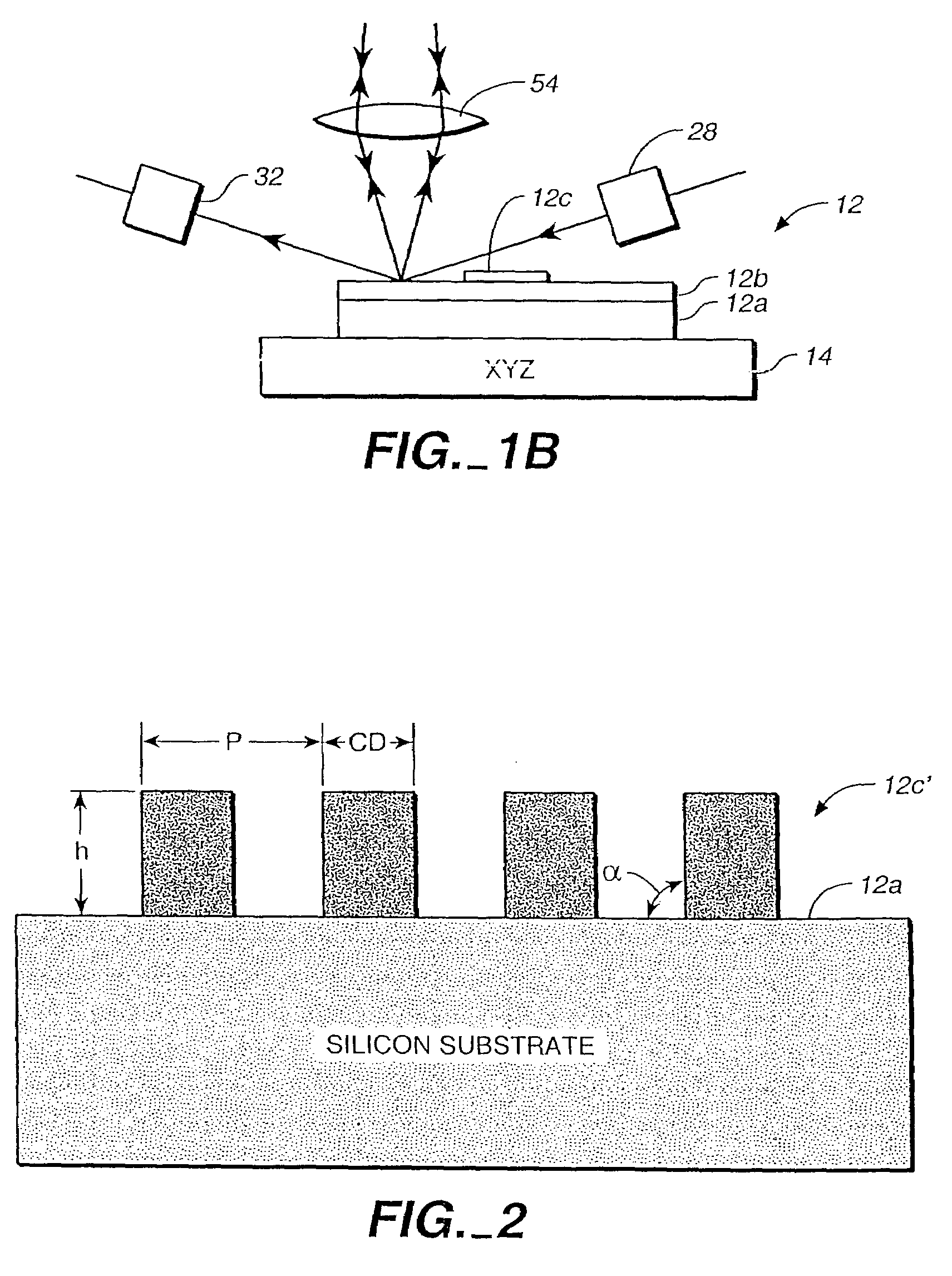Spectroscopic scatterometer system
a scatterometer and spectroscopic technology, applied in the field of scatterometers, can solve the problems of increasing exponentially the number of signatures that have to be calculated, the scatterometer that measures the entire diffraction envelope does not provide the data required for an accurate analysis, and the process steps of state-of-the-art devices
- Summary
- Abstract
- Description
- Claims
- Application Information
AI Technical Summary
Benefits of technology
Problems solved by technology
Method used
Image
Examples
Embodiment Construction
[0035]This invention is based on the recognition that, by measuring or otherwise obtaining characteristics such as the film thickness and optical index of the underlying films underneath the diffracting structure, the subsequent tasks of construction of a database and matching a signature of the diffracting structure to the database are much simplified. Furthermore, if spectroscopic ellipsometry is used to measure the film thickness and optical index of the underlying film(s) under the diffracting structure, an instrument which can be used for spectroscopic ellipsometry as well as for spectroscopic scatterometry may be provided for carrying out both functions. In the preferred embodiment, the spectroscopic ellipsometer and its associated spectroscopic scatterometer in the instrument may share many common optical elements to reduce the cost of the combined instrument and simplify its operation.
[0036]By first measuring the film thickness and optical refractive index of the underlying ...
PUM
| Property | Measurement | Unit |
|---|---|---|
| wavelengths | aaaaa | aaaaa |
| oblique angle | aaaaa | aaaaa |
| oblique angle | aaaaa | aaaaa |
Abstract
Description
Claims
Application Information
 Login to View More
Login to View More - R&D
- Intellectual Property
- Life Sciences
- Materials
- Tech Scout
- Unparalleled Data Quality
- Higher Quality Content
- 60% Fewer Hallucinations
Browse by: Latest US Patents, China's latest patents, Technical Efficacy Thesaurus, Application Domain, Technology Topic, Popular Technical Reports.
© 2025 PatSnap. All rights reserved.Legal|Privacy policy|Modern Slavery Act Transparency Statement|Sitemap|About US| Contact US: help@patsnap.com



